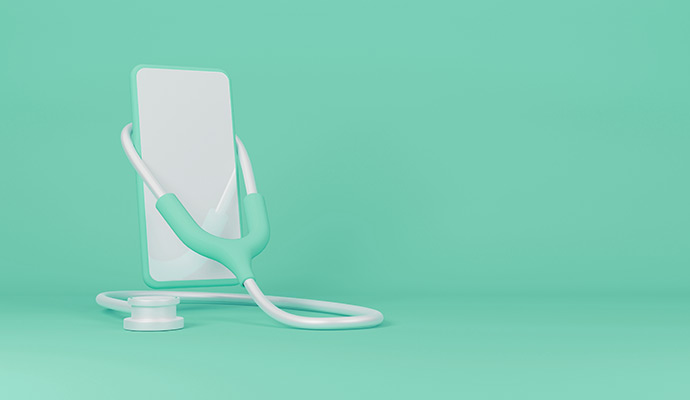Audio-Only Telehealth Effective in Treating Underserved Patients
A recent study found a mere 6.5 percent difference in satisfaction rate between audio-only and video-based telehealth in treating older and underserved patients.

Source: Getty Images
- While exploring methods for virtually treating older and underserved patients, a study from the American Journal of the Medical Sciences found that audio-only telehealth produced similar benefits and was not inferior to video-based telehealth.
These findings come as industry leaders work to assess the efficacy of audio-only and video-based telehealth.
In this study, researchers gathered a diverse group of participants; 43 percent were Black, and 68 percent were women. They also considered factors such as age and insurance status when drawing conclusions.
The study occurred through a clinical trial, where all participants were randomly assigned to have their next visit occur through either phone or video-based platforms. The central unit of measurement was visit satisfaction rate, reported on a ten-point scale. Researchers noted noninferiority data based on whether patient satisfaction between the telehealth methods exceeded a -15 percent margin.
Researchers considered various factors such as sex, race, employment, ADI, and transportation resources, however, they concluded that these factors did not have a large influence on data.
However, researchers noticed that those in the phone group tended to be of a younger age and Medicare coverage was less frequent, leading to the inclusion of this data.
Following the collection of these numbers, the satisfaction rate among those using phone-only telehealth was -4.1 percent, which is more significant than the -1.3 percent that existed prior to the inclusion of age and insurance status data. Despite this difference, results did not exceed the -15 percent margin, meaning that noninferiority was not established.
Data regarding satisfaction rates also aligned with phone-only visits being noninferior. When asked if they would like a telehealth visit of a similar type in the future, 30.2 percent of the video group and 27.9 percent of the phone group reported yes. Both groups reported similar levels of agreement when asked whether they would recommend telehealth or if they believe that the audio-only visit was satisfactory in providing for needs.
Based on this data, researchers concluded that similar satisfaction levels existed between users of video-based and phone-only telehealth, and that neither was inferior to the other.
However, noted limitations included the lack of consideration regarding different diseases, potential social desirability bias, the use of high satisfaction evaluation methods as opposed to continuous satisfaction, and the lack of ability to apply results to those without video technology.
Previous studies have corroborated these results, indicating the high levels of efficacy associated with audio-only telehealth.
A report from March 2022 indicated that federally qualified health centers found audio-only telehealth highly effective and resourceful during the COVID-19 pandemic. According to data, audio-only telehealth eclipsed in-person care for primary care and behavioral health visits for a period of time.
Another survey from March 2022 indicated that the portion of physicians using audio-only telehealth was high. It is believed that this may be due to the ability of audio-only services to reach and care for underserved populations. Black patients and older people often have limited access to technology, leading them to this type of care.
